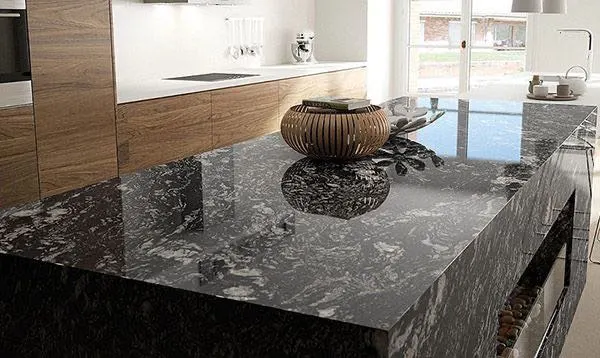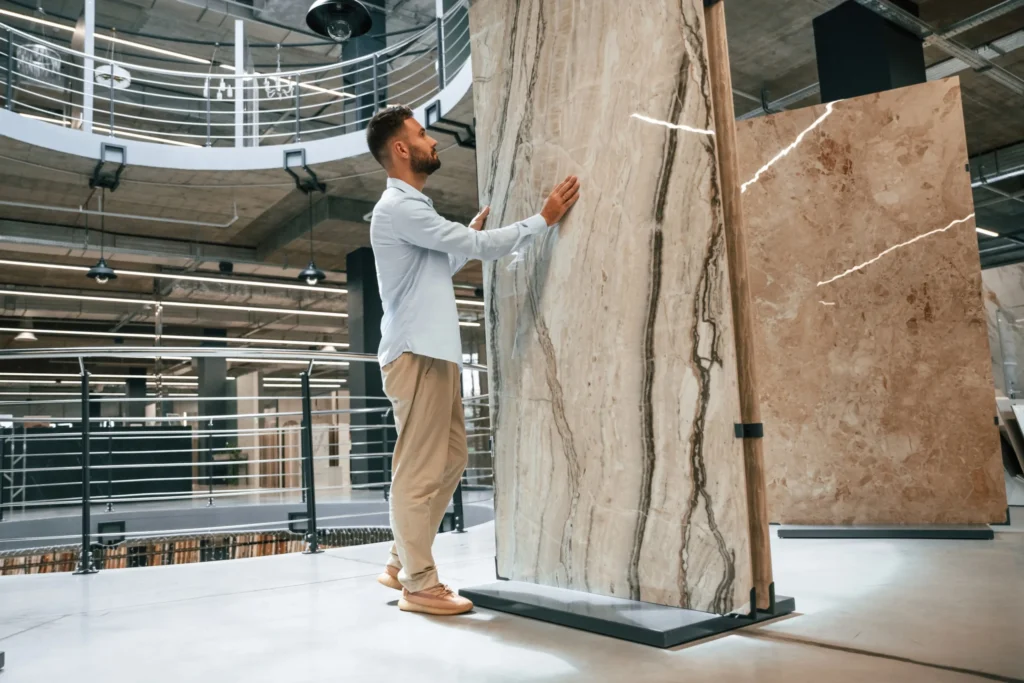Some materials deteriorate over time, while others remain eternal. Granite is formed deep beneath the Earth’s crust and is characterized by its exceptional durability. Products made from this material are highly attractive and add a touch of luxury to any interior or exterior.
All About Granite: A Complete Overview
What is granite? It is an intrusive igneous rock, which is one of the most widely used mining materials in the world. Granite consists of 5-10% biotite, 20-30% quartz inclusions, and 60-65% feldspar. Thanks to its unique properties, the original color and natural pattern of the stone are preserved for a long time.
Granite Rock – The Timeless Natural Stone
Granite material is particularly durable and can withstand heavy loads. This is confirmed by the fact that erosion can only appear on fine-grained granite after more than 600 years of use. High temperatures do not bother him either.
Which Type of Rock is Granite?
Granite is formed in the Earth’s interior and belongs to plutonic (deep) rocks. It may differ slightly in appearance and have a different mineral composition. This depends on where it was formed and certain characteristics. For example, the composition may change due to weathering, but only over time.
How Granite is Formed in Nature
Granite is formed underground at a depth of 1.5 to 50 km. This process occurs in three stages: melting, magma formation, and crystallization. The crystallization process, which results in the formation of a coarse-grained structure, can take millions of years.
Key Properties of Granite Stone
To describe the material more accurately, it is necessary to consider granite characteristics. Let’s highlight them in the table below.
| Hardness: | On the Mohs scale, it’s ranked 6-7 out of 10. |
| Chemical composition: | 70-77% SiO₂, 11-13% Al₂O₃, and additives – potassium oxide, sodium, iron, and magnesium. |
| Porosity: | Low, making the material resistant to weathering and water absorption. |
| Texture: | Visible mineral grains, most often with a coarse-grained or grainy texture. |
The color of granite can vary, as can its application. It all depends on the predominant minerals.
Common Applications of Granite
The uses of granite are very extensive, which is why this material is also relevant in the following areas:
- flooring;
- countertops;
- facades and buildings;
- industry, including crushed stone, raw materials for cement production, etc.;
- monuments;
- sculptures and works of art.
Granite can be called a universal material that has a wide range of advantages.

Granite Varieties and Colors
Granite is divided into several types and can vary in different parameters. Its colors can surprise you, opening up even more design possibilities.
White Granite Varieties
The white color is due to the high percentage of quartz and feldspar. If this granite also contains other minerals, the material may have light or dark flecks. If you want to visually expand the space, this is the ideal option. For this reason, it is often used for bathrooms, kitchens, and small rooms.
Black Granite Varieties
The black color is due to the presence of biotite and hornblende minerals. They give the material depth and often a matte or glossy surface. Nowadays, this type of granite is increasingly found in modern interiors and design solutions.
Pink Granite Types
The presence of potassium feldspar gives granite a pink or red hue. Pink can look different and be complemented by gray and black grains, cream veins, or be a more saturated, uniform shade.
Green Granite Options
Green granite is considered rare. The description of the composition of this material is chlorite or epidote. This shade looks expressive and is usually achieved through the application of pressure and high temperatures.
Yellow Granite Styles
The distinctive features of yellow granite are warmth and brightness in design. The golden hue is due to the high iron content. To make the right choice, you need to consider the veins and finish options.
Gray Granite Stone
If you prefer more subtle solutions, consider gray granite stone. It goes well with almost any color scheme, so it complements the interior nicely. By the way, gray-brown is the most common color of granite.
Amazonite Graniteur
This is an exotic variety that is obtained thanks to the presence of a rare mineral, amazonite, in its composition. It has a turquoise-green hue and is used in luxury interiors. Granite of this shade is mined in Brazil and, according to some sources, even has magical properties.
Benefits of Choosing Granite
Granite is a strong and reliable material. Let’s highlight its main advantages:
- Durability. Granite does not fade or dull, retaining its original appearance for a long time.
- Size, color, shape to suit every taste. This will allow you to choose a granitic product based on your wishes and requirements.
- Low water absorption. Granite is ideal for use in bathrooms thanks to its dense structure, which does not absorb moisture.
- Aesthetic appeal. This material looks expensive, and its natural pattern gives the interior a more interesting look.
- Price. Despite the fact that this type of stone is natural, it remains reasonably priced.
Caring for granite also does not require any special effort. Just avoid harsh chemicals and use a soft sponge or cloth for cleaning.
Granite Extraction and Quarrying
The extraction and processing of granite is a complex process. It requires precision, strength, and relevant knowledge. It all starts with geological exploration, then the creation of a quarry, and open-pit mining. On average, it takes from several weeks to several months.
Popular Topics on Granite
Granite has been popular for many years. In this regard, the most discussed topics related to this material include:
- types and colors of granite;
- reliability and other advantages of the material;
- definition of granite, density, and other characteristics;
- extraction and processing.
Granite is more than just stone. It is a design solution, high-quality and durable products, and much more.
Related Posts You May Find Useful
To understand what granite is, pay attention to how it looks. Take a look at products for bathrooms, kitchens, and so on. And if you are interested in historical quarries and granite mining, start learning this useful information.

